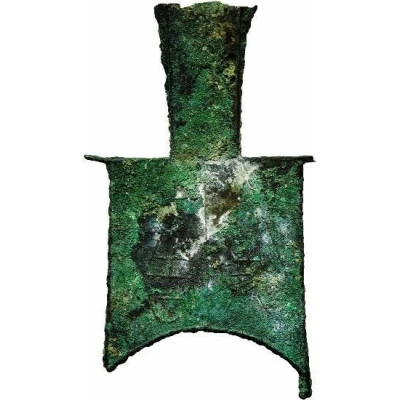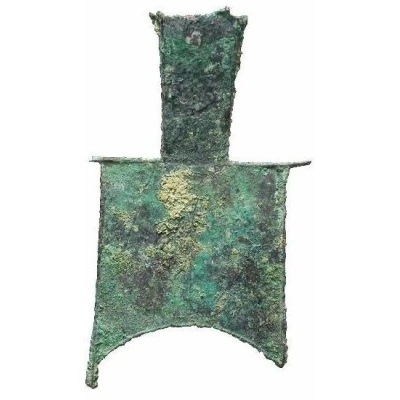


© Jean Elsen & ses Fils s.a.
Spade Eastern Zhou 400 BC - 300 BC
| Bronze | 14.16 g | - |
| Issuer | State of Eastern Zhou (Warring States) |
|---|---|
| Type | Standard circulation coin |
| Years | 400 BC - 300 BC |
| Currency | Spade money (401-250 BC) |
| Composition | Bronze |
| Weight | 14.16 g |
| Shape | Spade |
| Technique | Cast |
| Demonetized | Yes |
| Updated | 2024-10-09 |
| Numista | N#272047 |
|---|---|
| Rarity index | 100% |
Interesting fact
The Spade coin was used as a form of currency during the Warring States period in ancient China, and it was one of the first coins to be produced in large quantities using a standardized system. This coin was made of bronze, a metal alloy composed of copper and tin, which was durable and resistant to corrosion, making it an ideal material for coins that were meant to be used for everyday transactions. The Spade coin was also characterized by its unique shape, which resembled a spade or a shovel, and it was divided into 10 smaller units called "qian," which made it easier for people to use for small transactions. Overall, the Spade coin played an important role in the development of early Chinese currency and commerce.